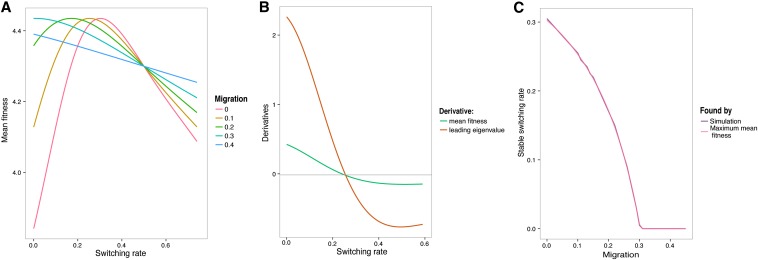Figure 2.
The link between the evolutionarily stable switching rate and the switching rate that maximizes mean fitness at equilibrium. The symmetric selection coefficient s = 0.4. Recombination rate is r = 0. The environment changes every n = 4 generations. (A) Mean fitness at equilibrium, for the range of migration rates in the key. In B, using the migration rate m = 0.1 as an example, we show that the switching rate that maximizes mean fitness at equilibrium is also the switching rate that is uninvadable by other rates; in other words, the zeros of the derivative of the mean fitness at equilibrium are also the zeros of the derivative of the leading eigenvalue of the local stability matrix. (C) The match between the stable switching rates found by simulation and the switching rates that maximize mean fitness at equilibrium, as a function of the migration rate.

